For years, Google dominated the search landscape so thoroughly that “Googling” became synonymous with searching the internet. But that dominance is starting to shift. As new platforms and search behaviors emerge, a new era of optimization is taking shape: Answer Engine Optimization, or AEO.
AEO has risen alongside the meteoric growth of generative AI tools like ChatGPT and Gemini, AI-generated summaries such as Google’s AI Overview, and the widespread adoption of voice assistants like Alexa and Siri. Instead of scrolling through pages of blue links or browsing multiple websites, users now expect immediate, well-packaged answers to their queries—all in one place.
This shortening of the search process is making a huge impact on the future trajectory of search and demands that businesses rethink how they’re optimizing their content to surface on search engine (or, more accurately, answer engine) results. For marketers and businesses, this means rethinking traditional SEO strategies and learning how to optimize for the platforms that are now delivering answers instead of links.
What you’ll learn:
- How to start thinking about optimizing your content for AI-powered platforms that deliver instant, zero-click answers
- What Answer Engine Optimization (AEO) is and how it differs from traditional SEO
- The rise of answer engines like ChatGPT, Gemini, Alexa, and Siri—and how they’re changing user search behavior
- Why the shift from search engines to answer engines matters for brands and marketers
What is Answer Engine Optimization (AEO)?
AEO, or Answer Engine Optimization, refers to the practice of optimizing content to provide direct zero-click answers to user queries. This can be on a Generative AI-powered chatbot like Gemini or ChatGPT, AI-generated search engine summaries like Google AI Overview, or voice search assistants like Alexa or Siri.
As modern search behavior shifts toward direct answers, optimization strategies must also evolve, focusing on the user’s intent and delivering relevant, useful content tailored to the platform where the query is made. Answer engine optimization is therefore the process of optimizing generative AI chatbots and large language models (LLMs), influencing their learning and training data and feedback loop to ensure that your brand is intentionally present in the right spaces at the right times.
AEO is arguably a subfield or an evolution of search engine optimization (SEO), with a similar principle of needing to understand the user’s search intent and how best to answer it. While AEO shares a common goal with SEO to provide highly useful content that answers users’ queries as accurately and concisely as possible, AEO specifically focuses on creating content that is a direct answer to the question so that it’s easily readable, crawlable, and presentable by AI answer engines and voice search assistants.
What is an Answer Engine?
Before we get into the specifics of how to leverage answer engine optimization to power your business growth, let’s clarify what exactly an answer engine is and how the cultural shift from search engines to answer engines came about.
An answer engine harnesses the power of artificial intelligence and natural language processing to understand the user’s query and deliver a direct answer, eliminating the need for users to sift through multiple search results.
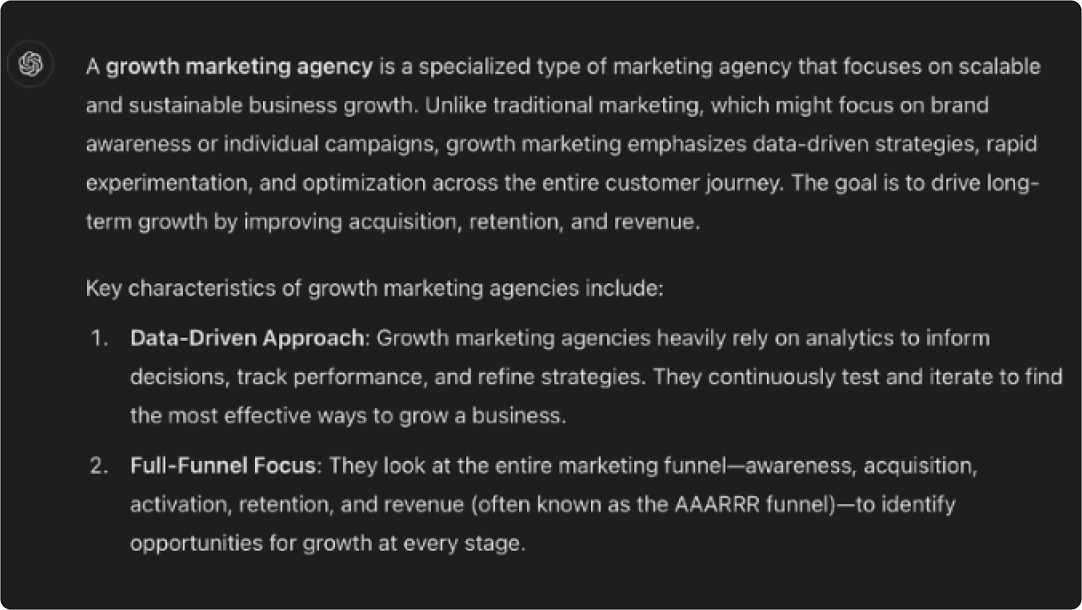
While traditional search engines like Google and Bing provide a list of relevant web pages in response to a query, answer engines take it a step further by directly providing concise and accurate answers to specific questions — all with zero-clicks and little to no wait time. These engines are designed to provide instant and precise responses, making them invaluable tools for quick and efficient information retrieval.
Whether you need to know the weather forecast, the capital of a country, or the definition of a word, an answer engine can provide you with the answer in a matter of seconds, revolutionizing the way we seek and consume information.
What are Some Examples of Answer Engines?
There are two main categories of answer engines: generative AI bots such as ChatGPT, Gemini, Perplexity, Claude etc., and AI-powered voice search assistants such as Alexa, Siri, and Google Assistant.
Gen AI uses sophisticated artificial intelligence algorithms to generate human-like responses to queries. These answer engines excel at understanding and generating textual information, making them valuable resources for answering a wide range of questions.
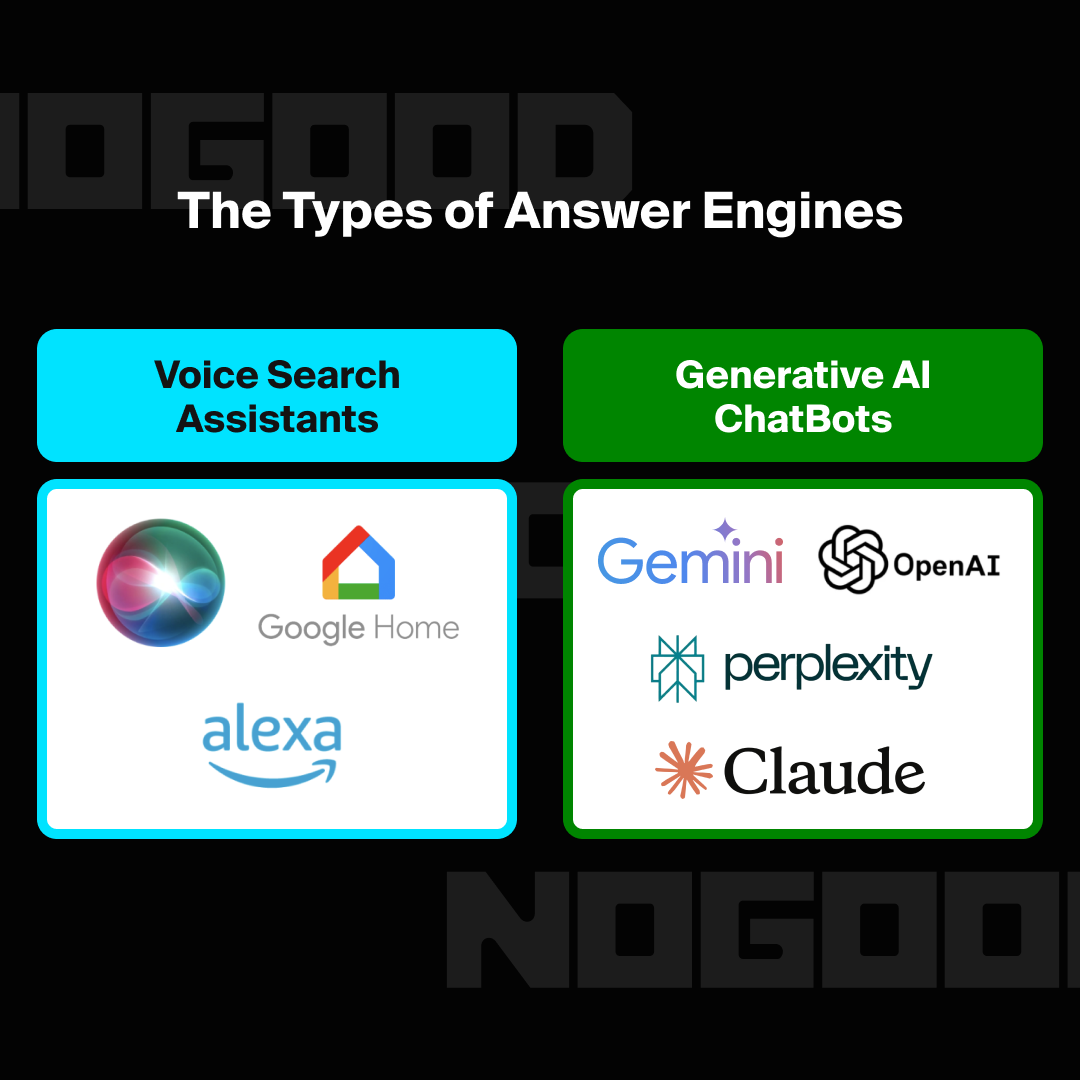
AI Chatbots: ChatGPT, Gemini, Claude, Perplexity, DeepSeek, etc.
The most prominent example of an answer engine is ChatGPT. OpenAI launched ChatGPT in November of 2022, and it quickly gained traction, capturing the interest of researchers, developers, and users alike. It set the record for being the fastest-growing platform in history, reaching 100 million users two months after its initial launch, becoming the go-to place for users to ask questions and get quick answers to hyper-specific search queries.
By 2025, ChatGPT had climbed to become the most downloaded app in the App store, surpassing long-time leaders Instagram and TikTok for the first time.
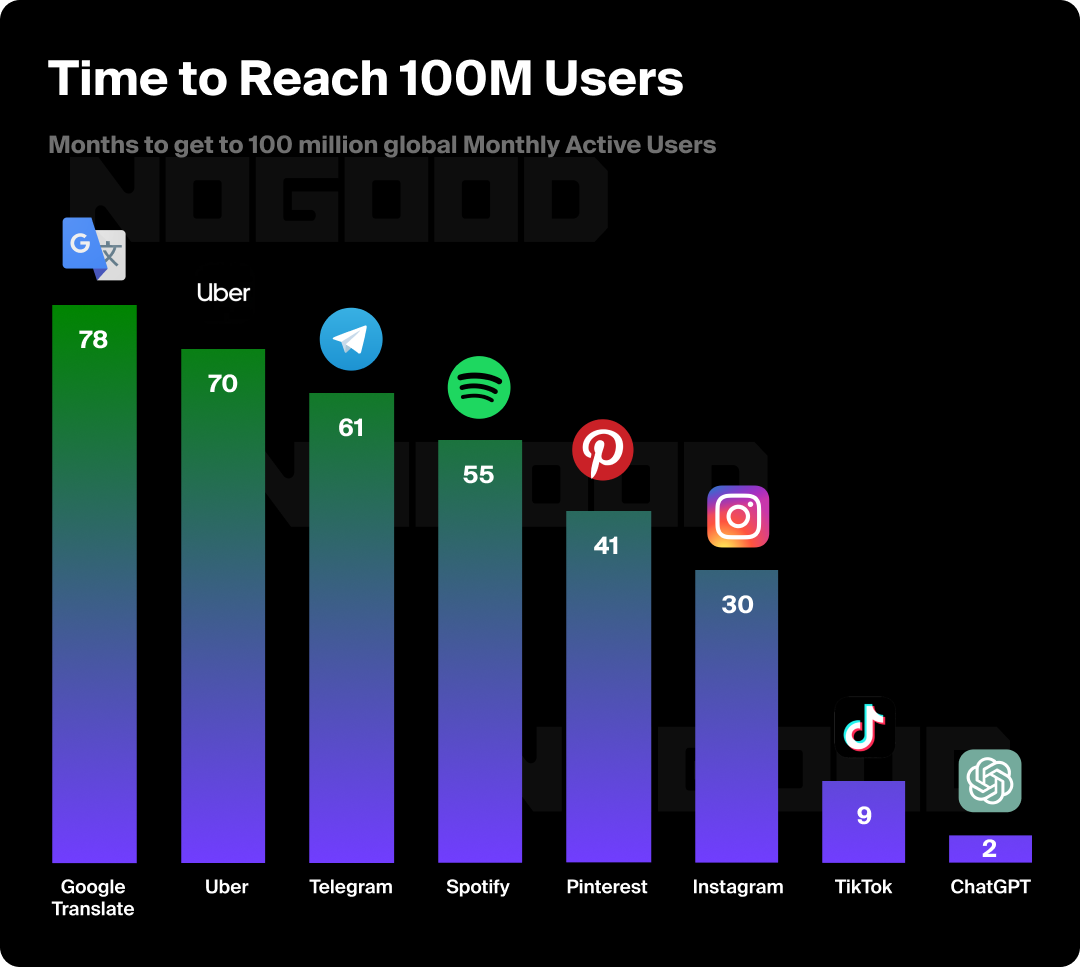
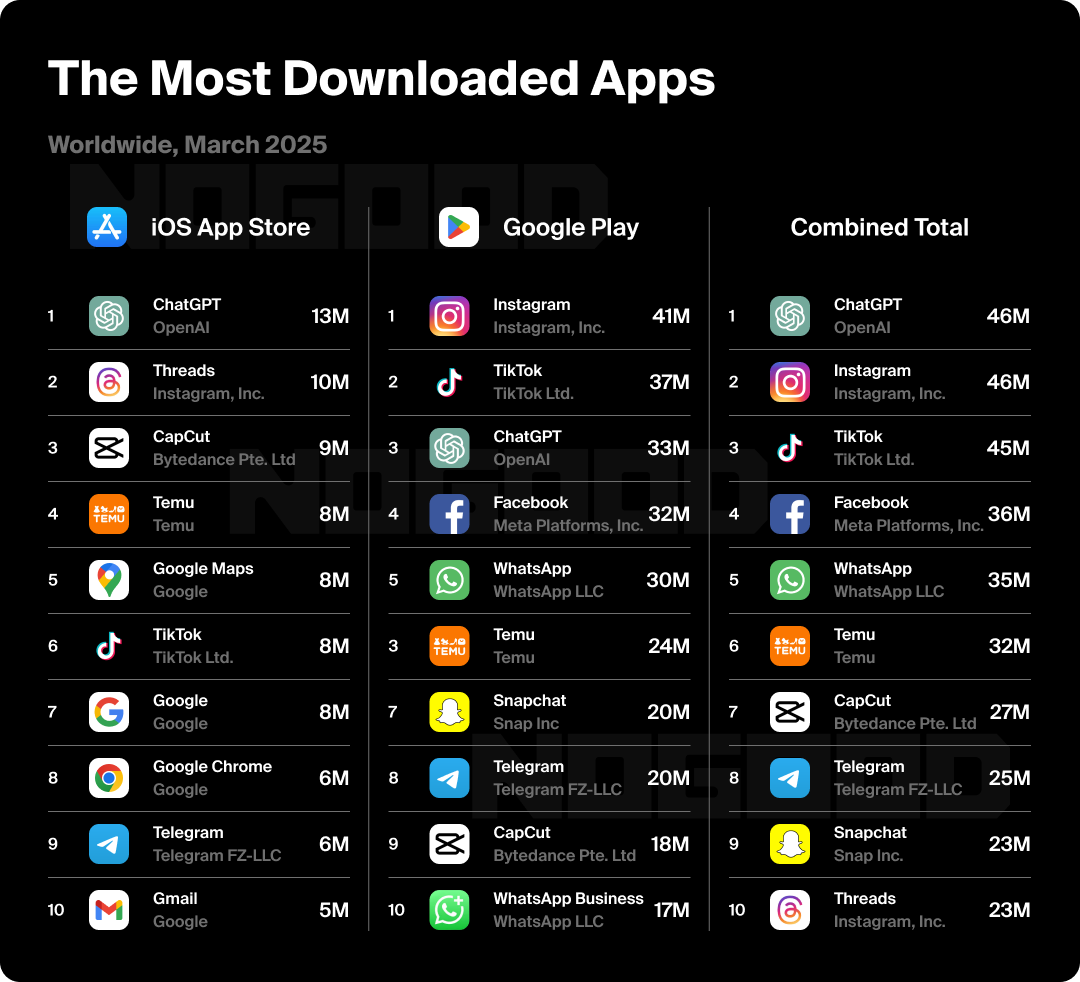
The model’s ability to engage in dynamic conversations and provide coherent responses made it a breakthrough in Gen AI. Users interact with ChatGPT by simply inputting text prompts and receiving detailed and informative answers. While ChatGPT is praised for its conversational abilities, it also comes with limitations, such as occasional inaccuracies or generating responses that may seem plausible but are not factually correct.
Following the success of ChatGPT, other major AI players such as Gemini, Claude, Perplexity, DeepSeek, and more began to enter the space, further popularizing the use of AI chatbots as a primary method of information search and discovery.
AI-Powered Voice Search Assistants: Alexa, Siri, Google Assistant
Another type of answer engine separate from chatbots is AI-powered voice search assistants. These answer engines utilize voice recognition technology to understand spoken queries and provide immediate responses.
With a simple voice command, users can ask questions, get directions, set reminders, and perform various tasks without touching a screen. Voice search assistants provide quick and convenient answers, catering to users who prefer hands-free interaction and real-time information.
As these assistants continue to evolve and improve, they become an essential part of our everyday lives, seamlessly integrating into our homes, smartphones, and other smart devices. Voice search assistants are already highly integrated into consumers’ daily lives, with 41% of the U.S. population using voice search daily. What’s more, 72% of people who own a voice search device say it has become a part of their daily routine, and 65% of people who own a Google Home or an Amazon Echo don’t want to go back to keyboard searches.
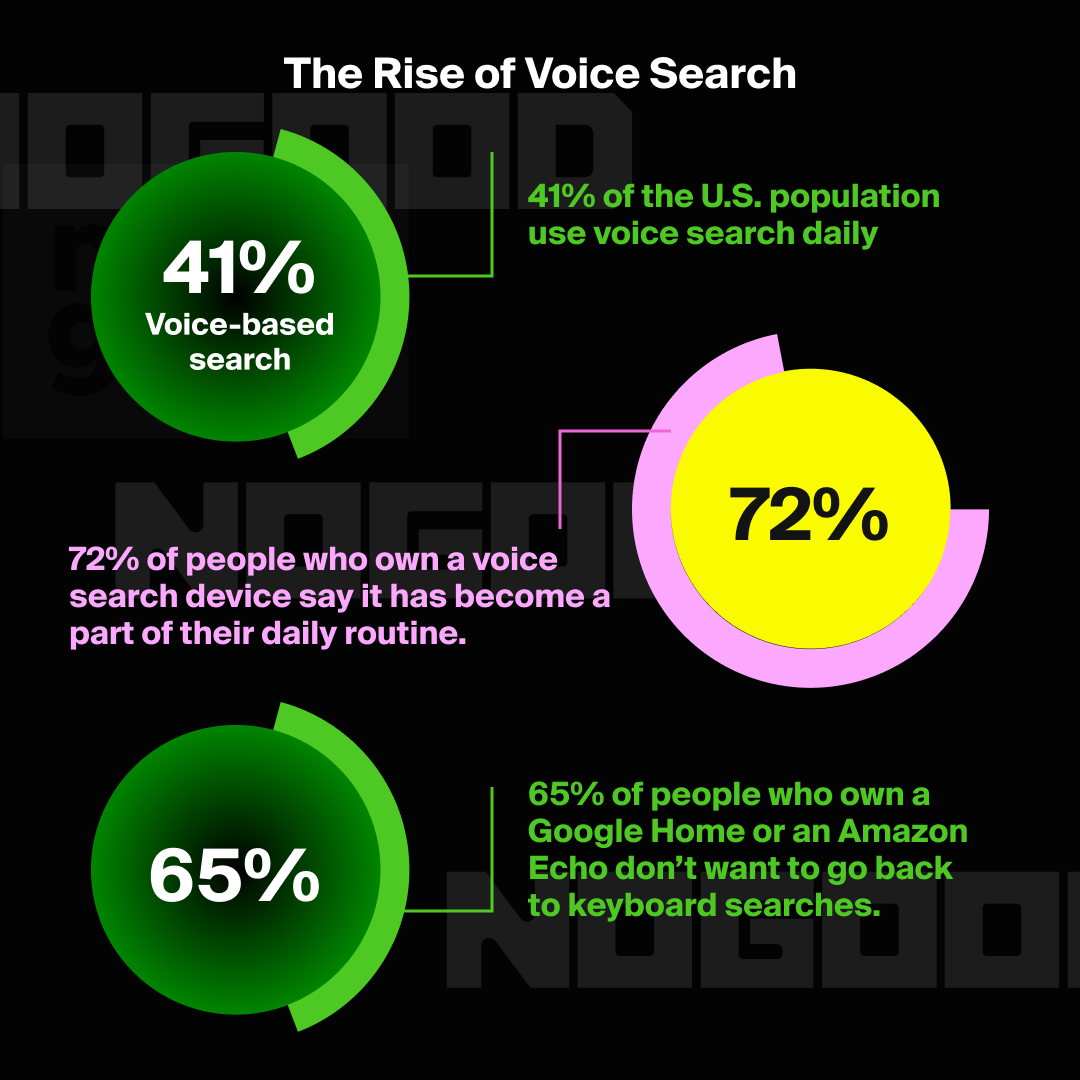
Why Did We Shift From Search Engines to Answer Engines?
The evolution from traditional search engines to answer engines represents a significant shift in how we seek and consume information. While search engines like Google and Bing have long been the go-to platforms for retrieving relevant web pages based on keyword queries, the rise of answer engines has transformed the landscape of information retrieval.
This shift can be attributed to advancements in artificial intelligence and natural language processing, enabling answer engines to understand queries in a more nuanced manner and provide direct and accurate answers to specific questions.
One of the key drivers behind this shift is the increasing demand for instant and precise information. Traditional search engines present users with a list of relevant web pages, requiring them to navigate multiple sources to find the desired answer. This process can be time-consuming and often requires the user to skim through lengthy articles or websites.
Answer engines, on the other hand, leverage AI algorithms to interpret the user’s query, extract relevant information, and deliver a concise answer. This streamlining of the search process eliminates the need for users to sift through search results, providing them with the desired information quickly and efficiently. In short, consumers are becoming more and more impatient — and answer engines are rising to the challenge to combat that desire for faster, more accurate information delivery.
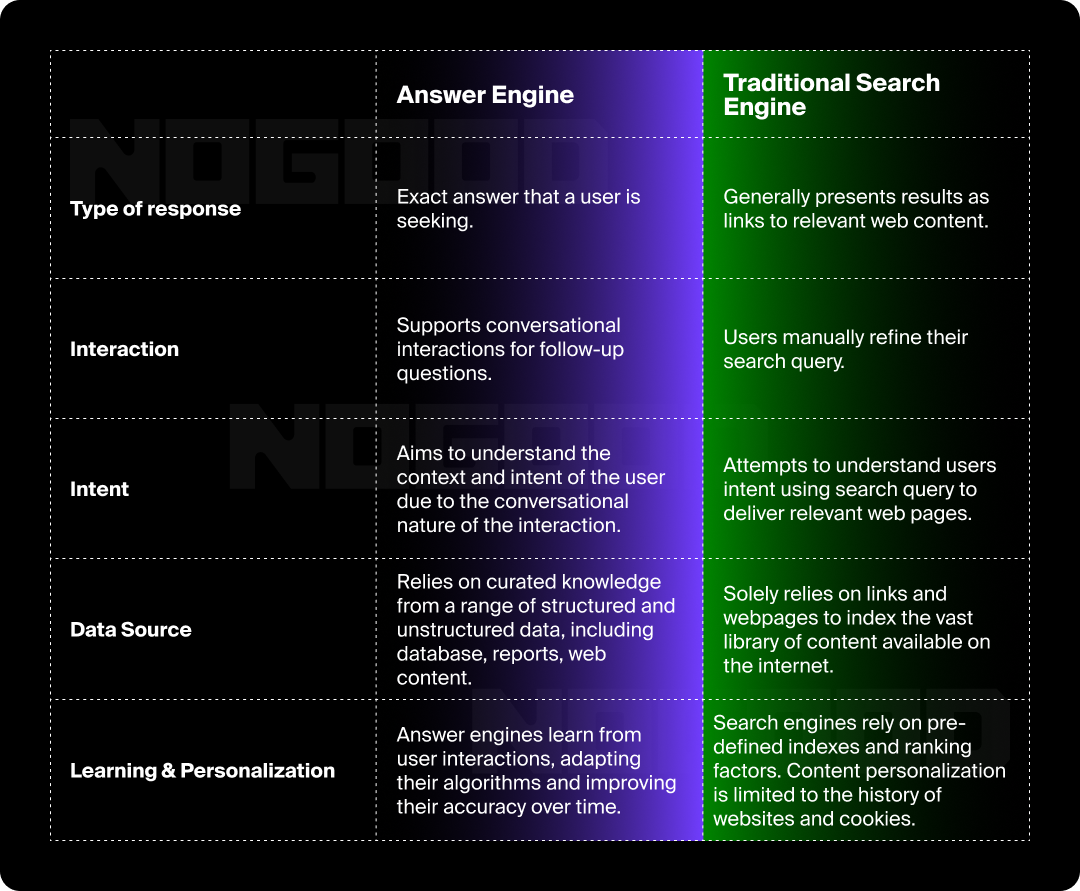
The emergence of voice-enabled technologies has also played a significant role in the rise of answer engines. Voice assistants like Alexa, Siri, and Google Assistant have made it effortless to ask questions and receive immediate answers.
Users can simply speak their queries, and the AI-powered voice assistants leverage natural language understanding to provide spoken responses. This shift towards voice-based interaction has further propelled the demand for answer engines, as they offer hands-free access to information and cater to the growing preference for voice search.
What is the difference between answer engine optimization (AEO) and SEO?
The ultimate goal of both SEO and AEO remains the same: to optimize content to provide relevant and useful information in response to user queries. That being said, SEO and AEO are different in their approach to optimizing content for search engines, each with its own focus and objectives.
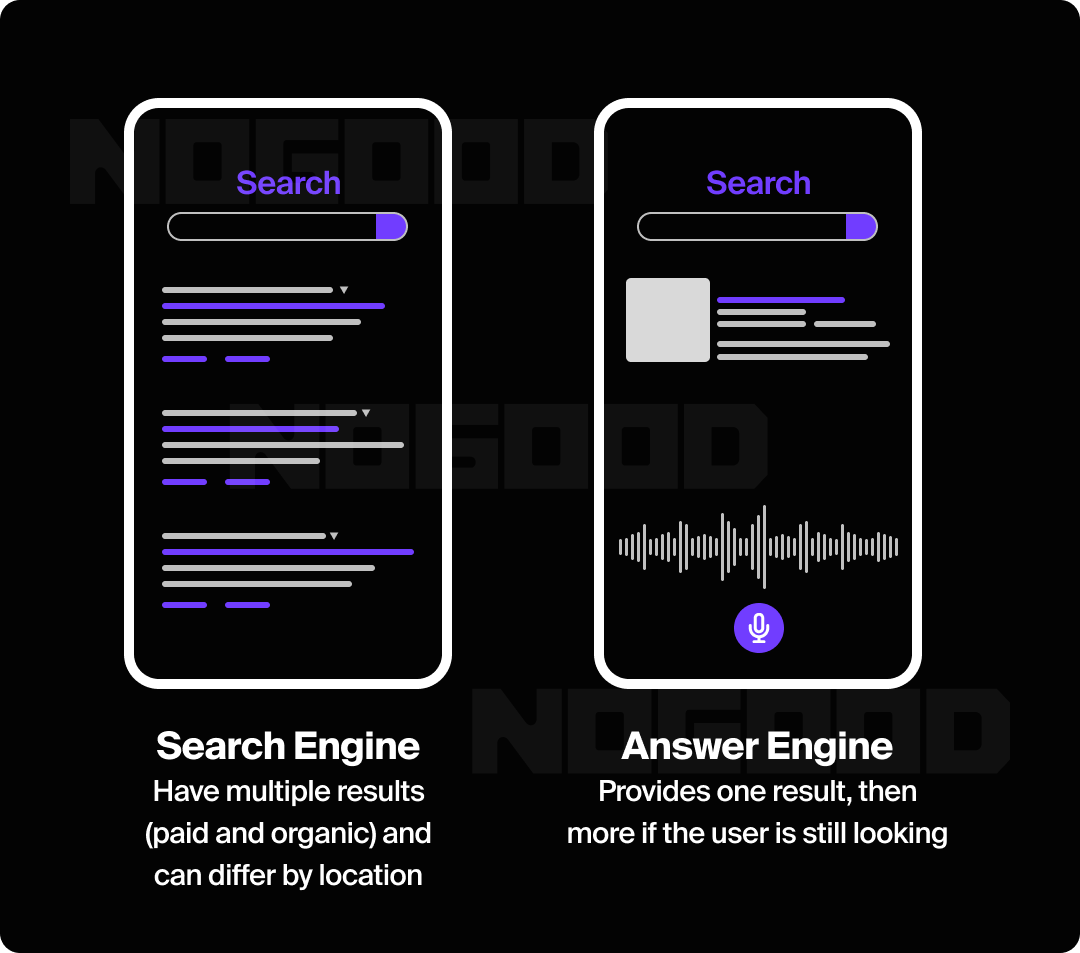
SEO primarily revolves around improving website visibility and rankings on traditional search engines like Google and Bing. It involves optimizing various aspects such as keywords, featured snippets, structured data markup, link building, and site structure to ensure that a website ranks higher in search results pages. SEO aims to attract organic traffic by providing valuable and relevant content that matches user search queries, aiming to increase website visibility and drive traffic to the site.
On the other hand, AEO is a more specialized approach that specifically targets answer engines or AI-powered platforms that directly provide answers to user queries. AEO focuses on creating content that directly answers specific questions in a concise and accurate manner.
It involves understanding user intent, optimizing content structure, and using language that is easily crawlable and comprehensible by AI answer engines like ChatGPT or Gemini. AEO aims to position content as the direct answer to user queries, ensuring it is easily discoverable and displayed prominently on answer engine platforms.
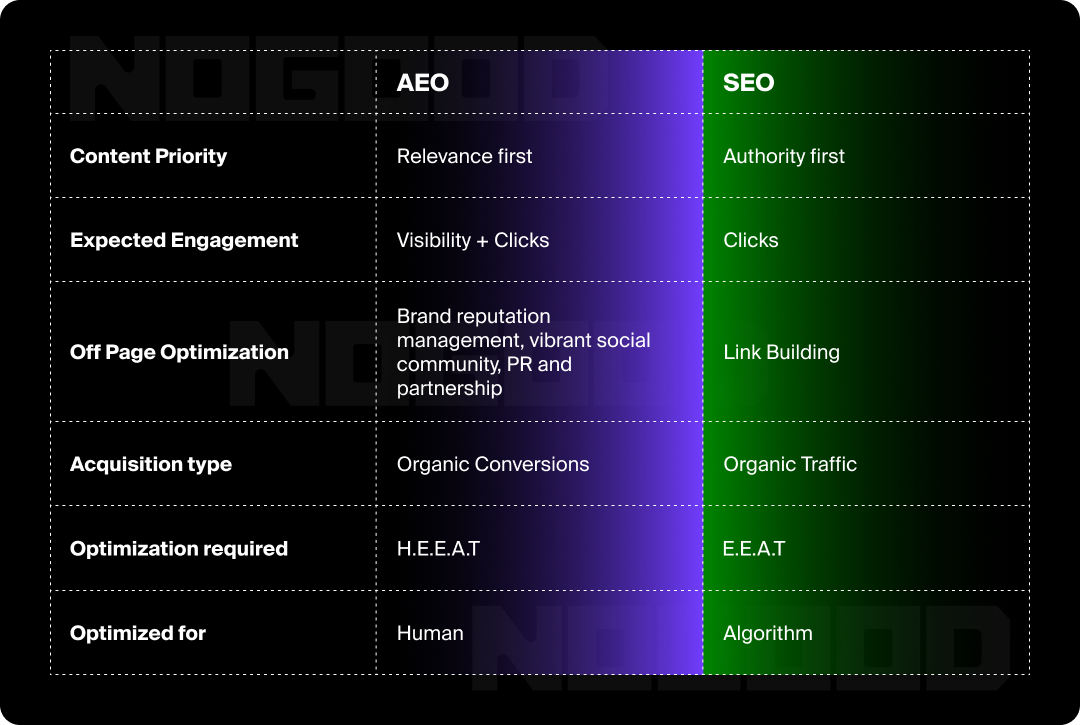
How to Perform Answer Engine Optimization for Your Business
With the rapidly increasing popularization of answer engines, brands and marketers must grasp the art of optimizing and influencing the outputs of these engines. You can begin by identifying, understanding, and influencing the data sources these engines rely on for training. AEO involves ensuring that the content and data you publish are easily accessible and can be utilized to train answer engines, enabling you to impact their output. This is where the power of community building and user-generated content shines, as socially validated content pieces can serve as the fundamental sources from which answer engines extract their information.
To truly comprehend what Gen AI deems an optimal answer, a valuable approach is to input the questions commonly asked by your target audience into the platforms they use for inquiry. By reverse-engineering the structure of your content based on the resultant answers, you can create a foundation that aligns with the expectations of users. To enhance the quality and value of your content, you can then infuse it with a unique brand perspective or add value that sets your business apart. This approach ensures that your content not only satisfies user queries but also adds a distinct touch that resonates with your brand identity.
The future of search is in AEO, so if you’re not already optimizing for answer engines, this is your sign to get started. Visit our Complete AEO Guide for more in-depth information on how to conduct answer engine optimization for your business, or contact us for more.
Answer Engine Optimization FAQs
Why is AEO important now?
With the rise of generative AI and voice search, users expect instant answers without clicking through multiple websites. AEO helps brands stay discoverable in this evolving, zero-click search environment.
Is ChatGPT an answer engine?
Yes. ChatGPT is a prime example of an answer engine. It uses natural language processing to understand questions and generate conversational responses in real time, often replacing the need for traditional searches.
How is AEO different from SEO?
While SEO focuses on ranking in search engine results pages, AEO prioritizes delivering concise, structured answers that AI platforms can easily surface. Think of AEO as SEO adapted for AI-first discovery.
Can AEO help drive traffic if users aren’t clicking through?
Absolutely. While users may not click, strong AEO can build brand authority, awareness, and recall by ensuring your name or product is the one mentioned in the AI-generated answer.
Will AEO replace SEO?
Not entirely. AEO is more of an evolution than a replacement; both strategies can (and should) work together to improve visibility across traditional search engines and emerging AI-powered platforms.
How do I get my content to rank on ChatGPT?
To appear in ChatGPT answers, your content needs to be authoritative, well-structured, and easily crawlable by AI training data sources. Check out our guide to ranking on ChatGPT for tactical steps and best practices.
What’s the best way to optimize for Google Gemini?
Gemini pulls from high-quality content that clearly addresses search intent and aligns with Google’s evolving AI summary capabilities. Here’s our full step-by-step breakdown on how to rank on Gemini.
Can I optimize for Perplexity like I do for SEO?
Yes, but it requires a shift in strategy. Perplexity values concise, source-backed answers that mirror conversational queries. Read our complete guide to ranking on Perplexity to learn how to tailor your content for AI-native discovery.







Great Blog post, Thanks for sharing such useful posts.